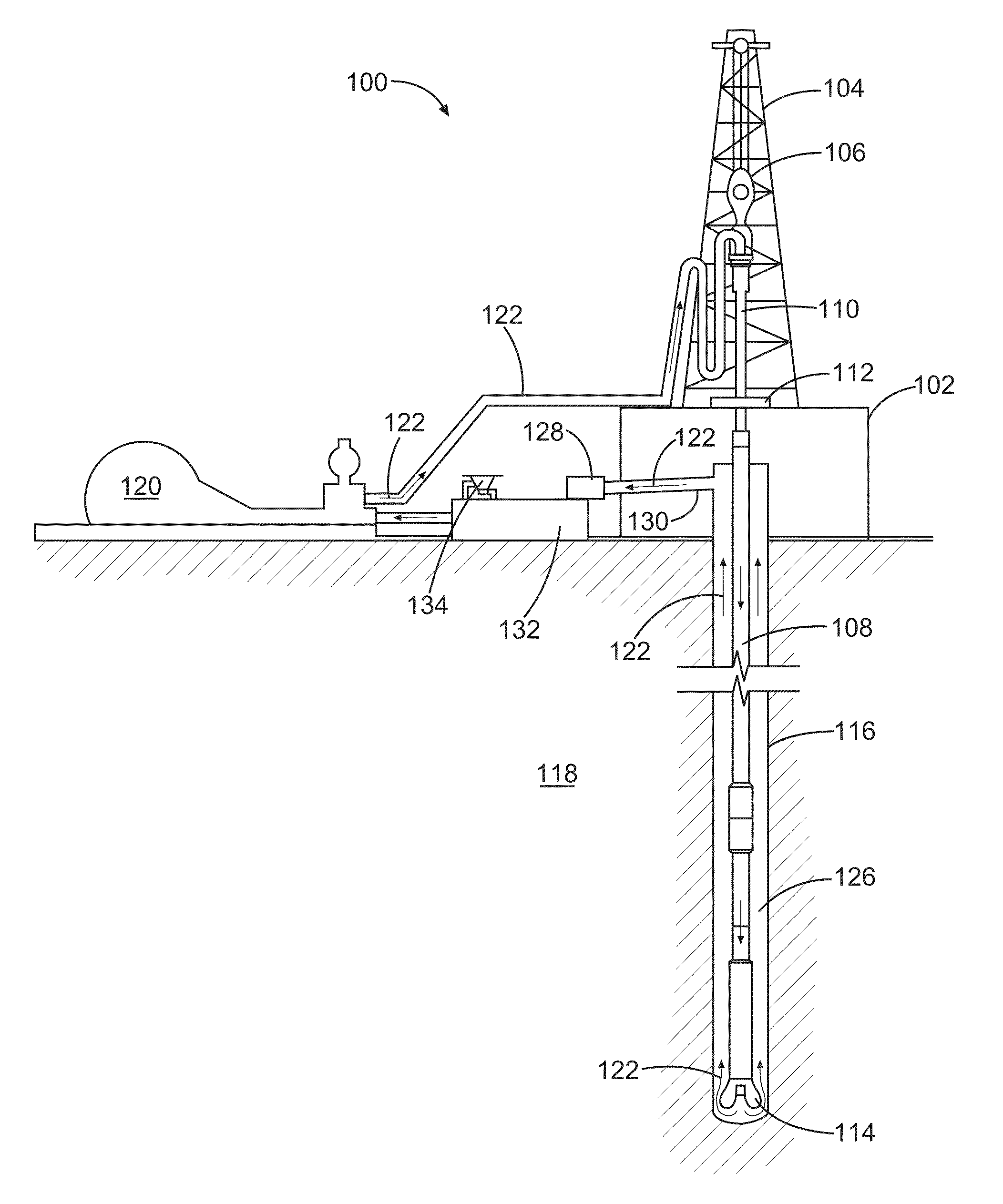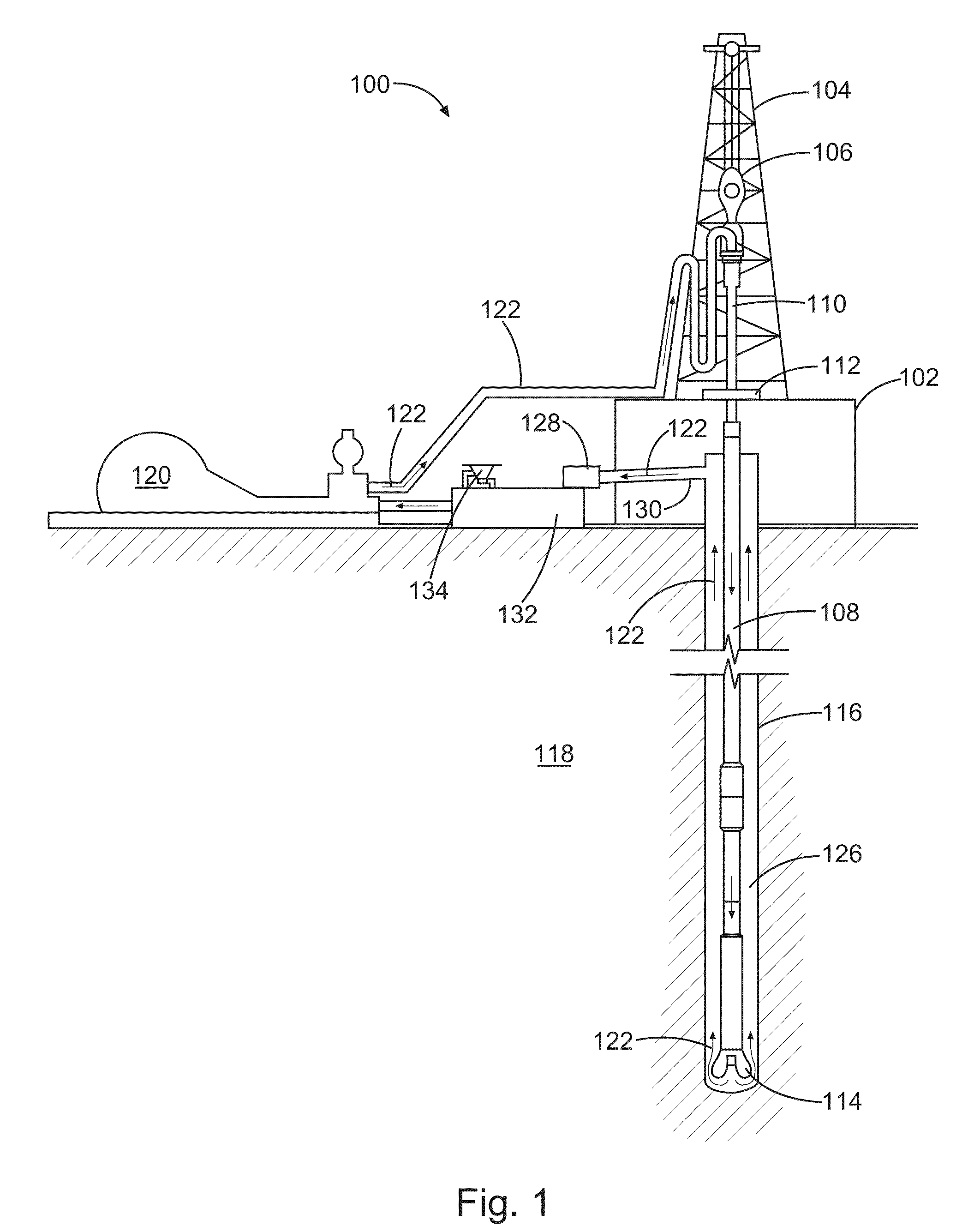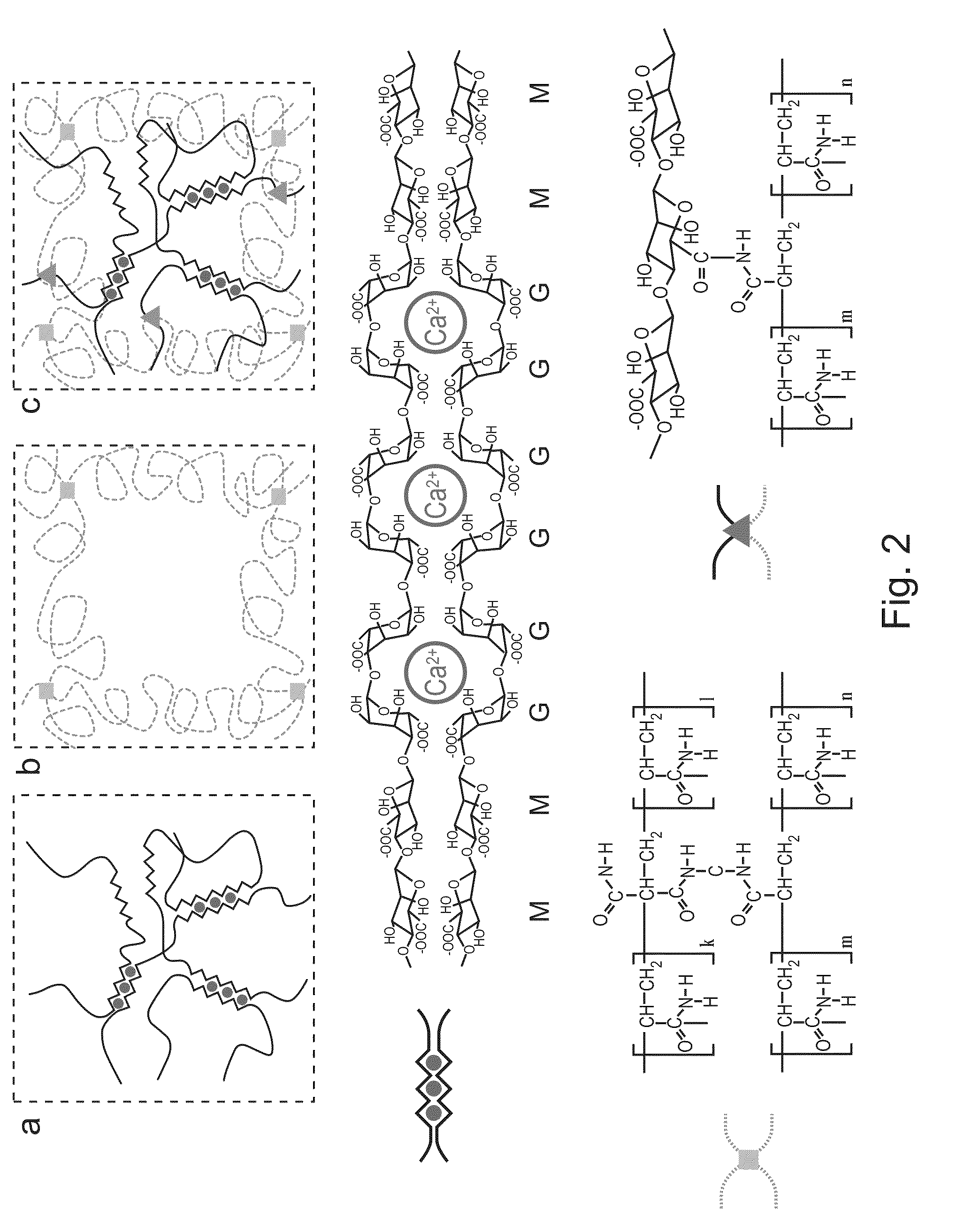Poly(alkyenylamide)-polysaccharide hydrogels for treatment of subterranean formations
- Summary
- Abstract
- Description
- Claims
- Application Information
AI Technical Summary
Benefits of technology
Problems solved by technology
Method used
Image
Examples
example 1
Synthesis of Alginate-Polyacrylamide Gel
[0161]Extremely stretchable and tough hydrogels were synthesized by mixing two types of crosslinked polymer: ionically crosslinked alginate, and covalently crosslinked polyacrylamide (FIG. 2).
[0162]FIG. 2 and insets a-c illustrate schematics of alginate, polyacrylamide, and alginate-polyacrylamide hydrogels. FIG. 2 inset a illustrates an alginate gel, wherein the G blocks on different polymer chains form ionic crosslinks through Ca2+. FIG. 2 inset b illustrates a polyacrylamide gel, the polymer chains form covalent crosslinks through N,N-methylenebisacrylamide (MBAA). FIG. 2 inset c illustrates an alginate-polyacrylamide gel, wherein the two types of polymer network are intertwined, and joined by covalent crosslinks between amine groups on polyacrylamide chains and carboxyl groups on alginate chains.
[0163]An alginate chain includes mannuronic acid (M unit) and guluronic acid (G unit), arranged in blocks rich in G units, blocks rich in M units,...
example 2
Mechanical Testing of Alginate-Polyacrylamide Gel
[0164]The gel was glued to two polystyrene clamps, resulting in specimens measuring 75.0×5.0×3.0 mm3. All mechanical tests were performed in air, at room temperature, using a tensile machine with a 500-N load cell. In both loading and unloading, the rate of stretch was kept constant at 2 min−1.
[0165]FIG. 3 illustrates that the alginate-polyacrylamide gel was highly stretchable and notch-insensitive. FIG. 3a illustrates a strip of the undeformed alginate-poltyacrylamide gel glued to two rigid clamps. FIG. 3b illustrates an alginate-poltyacrylamide gel stretched to 21 times its initial length in a tensile machine (Instron model 3342). The stretch, λ, was defined by the distance between the two clamps when the gel was deformed, divided by the distance when the gel is undeformed. FIG. 3c illustrates an alginate-poltyacrylamide gel having a notch cut into the gel, using a razor blade; a small stretch of 1.15 was used to make the notch clea...
example 3
Mechanical Testing of Alginate, Polyacrylamide, and Alginate-Polyacrylamide Gels
[0167]The properties of the alginate-polyacrylamide were even more remarkable when compared with gels formed from the individual alginate and polyacrylamide gels (FIG. 4a). The amounts of alginate and acrylamide in the alginate-acrylamide gels were kept the same as those in the alginate gel and polyacrylamide gel, respectively. When the stretch was small, the elastic modulus of the alginate-acrylamide gel was 29 kPa, which is close to the sum of the elastic moduli of the alginate and polyacrylamide gels (17 kPa and 8 kPa, respectively). The stress and stretch at rupture were, respectively, 156 kPa and 23 for the alginate-acrylamide gel, 3.7 kPa and 1.2 for the alginate gel, and 11 kPa and 6.6 for the polyacrylamide gel. Thus, the properties at rupture of the alginate-acrylamide gel far exceeded those formed from either of its alginate and polyacrylamide components.
[0168]The alginate-polyacrylamide gels d...
PUM
 Login to View More
Login to View More Abstract
Description
Claims
Application Information
 Login to View More
Login to View More - R&D
- Intellectual Property
- Life Sciences
- Materials
- Tech Scout
- Unparalleled Data Quality
- Higher Quality Content
- 60% Fewer Hallucinations
Browse by: Latest US Patents, China's latest patents, Technical Efficacy Thesaurus, Application Domain, Technology Topic, Popular Technical Reports.
© 2025 PatSnap. All rights reserved.Legal|Privacy policy|Modern Slavery Act Transparency Statement|Sitemap|About US| Contact US: help@patsnap.com



